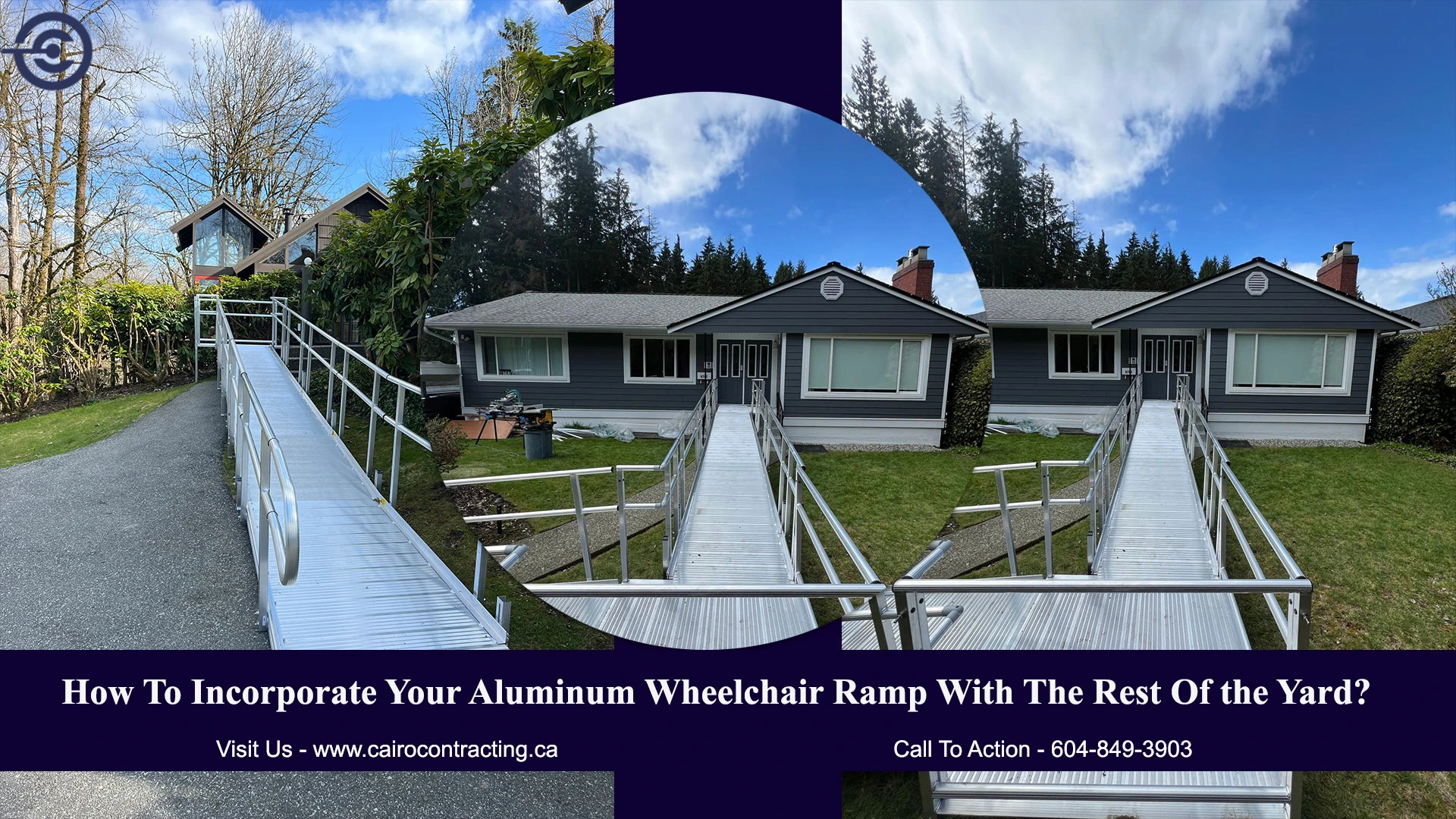Incorporating an aluminum wheelchair ramp into your yard can be a practical and aesthetic challenge, but with the right approach, it can blend seamlessly with the rest of your outdoor space. Here are some ideas for how to do this:

1. Consider the Design and Finish of the Ramp
- Choose a Color that Blends: Many aluminum ramps come in neutral or natural finishes like silver, gray, or bronze. You can choose a finish that complements the existing colors of your yard or home.
- Use Powder Coating: If the mobility ramp is custom-built, consider powder coating it in a color that matches or complements the outdoor furniture, door trim, or even fencing around your yard.
2. Integrate Landscaping Around the Ramp
- Plant Shrubs or Flowers: Surround the ramp with plants like low-maintenance shrubs, ornamental grasses, or flowers that can soften the hard edges and add color.
- Use Raised Beds or Planters: Position raised garden beds or planters along the sides of the mobility ramp to keep the area green and vibrant. They also provide a visual break from the wheelchair ramp.
- Creeping Vines: Plant vines along the sides of the mobility ramp or nearby trellises. Over time, they can grow and provide natural coverage, making the aluminum wheelchair ramp feel like part of the landscape.
3. Create a Pathway Leading to the Mobility Ramp
- Use Stone or Gravel Pathways: Lay down a stone or gravel path leading to the aluminum ramp to visually guide people to it, while also preventing soil erosion.
- Add Decorative Pavers: Place pavers around the aluminum wheelchair ramp and throughout the yard to create a cohesive look, making the transition from the mobility ramp to the rest of the yard more fluid.
4. Incorporate Functional Features
- Install Outdoor Lighting: To highlight the aluminum ramp, install low-voltage lighting along its sides. This makes it visible and safe to use at night and adds an attractive element to the landscape.
- Build a Small Deck or Patio: At the top or bottom of the mobility ramp, create a small deck or patio area with seating. This allows the ramp to flow into the outdoor living space and encourages people to spend time there.
5. Use Privacy Screens or Fencing
- Wooden or Metal Fencing: If the aluminum wheelchair ramp looks too industrial, you can build a wooden or metal fence or privacy screen around it to conceal the wheelchair ramp and blend it into the yard. This can be particularly useful if the mobility ramp is near a garden or a seating area.
- Lattice Screens: Lattice screens with climbing plants like ivy or roses can add both privacy and aesthetic appeal while masking the wheelchair ramp.
6. Keep the Ramp Accessible
- Ensure Smooth Transitions: If your yard has steps or other barriers, try to design the mobility ramp so that it offers a smooth, unobtrusive transition. This may involve sloping the yard or adding handrails that match the surrounding decor.
7. Add Personal Touches
- Decorative Elements: Consider adding small decorative items like a bench, bird bath, or small sculpture near the aluminum ramp. These can make the area feel more welcoming and less utilitarian.
- Seasonal Decorations: If you like to decorate your yard for the seasons, include the mobility ramp in your seasonal themes by adding holiday decorations, lights, or seasonal plants.
8. Ensure Safety and Durability
- Slip-Resistant Surfaces: Make sure the surface of the mobility ramp has a non-slip coating to ensure safety, especially if you live in an area with rainy or snowy weather.
- Check for Maintenance: Aluminum wheelchair ramps are low-maintenance, but keeping surrounding plants well-trimmed and checking for any wear on the mobility ramp itself can help maintain its appearance and functionality.
By thoughtfully combining these elements, you can make your aluminum wheelchair ramp a seamless part of your yard while ensuring it remains functional and safe. Call Cairo Contracting today to get your free estimate today!